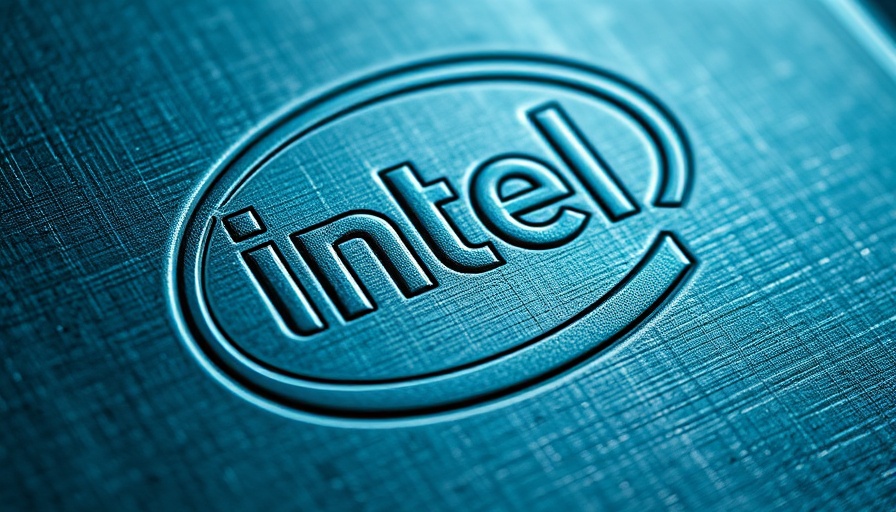
A New Era for Intel: What a 10% Stake Means
In a bold move, the U.S. government is stepping in to support the struggling chipmaker Intel by acquiring a 10% stake in the company. This decision, announced recently by former President Donald Trump, aims to bolster America's semiconductor industry at a critical time as global competition heats up. But what does this stake mean for Intel, the broader tech ecosystem, and the future of American manufacturing?
Understanding the Stakes in Semiconductor Production
With chip shortages crippling various sectors, from automotive to consumer electronics, the U.S. takeover is not just about aiding Intel; it's a strategic maneuver to regain semiconductor dominance. The pandemic exposed the vulnerabilities of the supply chain heavily reliant on overseas manufacturing, prompting a much-needed focus on domestic production. By investing in Intel, the government sends a clear signal that it prioritizes technological independence and robust national security.
Examining the Context: Intel's Recent Struggles
Intel, once a shining star in the tech industry, has faced significant challenges in recent years. Losses in market share to competitors like AMD and a slowdown in innovation have resulted in financial turmoil. This investment can be viewed as a lifeline, potentially providing Intel with the necessary resources to innovate and modernize its facilities, thus bridging the gap in production efficiency compared to rivals.
Historical Context: Lessons from Past Interventions
This is not the first time the U.S. has intervened in corporate matters. For instance, during the financial crisis, the government stepped in to bail out the auto industry to prevent widespread job losses. Similarly, this initiative could preserve American jobs in manufacturing and tech sectors, fostering a necessary revival of domestic industries.
Potential Risks and Challenges Ahead
Despite the optimism, challenges remain. Regulatory concerns, the competitive landscape, and the necessity of swift execution of infrastructure improvements pose significant hurdles. Moreover, there’s skepticism about whether government intervention can effectively steer Intel back on course. It raises the question: Can the government foster innovation while maintaining a free-market ethos?
Consumer Impact: What This Means for You
For everyday consumers, this investment may seem distant, but it has real implications. A revitalized Intel could mean better products and potentially lower prices as competition heightens. If Intel can innovate and keep pace with technology's rapid evolution, we all stand to benefit from more efficient and powerful devices. The confidence in U.S. manufacturing may also boost job prospects in tech and related fields, making the stakes incredibly relevant to today's workforce.
Future Predictions: What's Next for Intel and the Semiconductor Market
Looking ahead, the expectation is that Intel will leverage this stake to modernize its facilities and bolster R&D efforts. Market analysts suggest we could see improved chip designs that better meet the needs of emerging technologies, including AI and IoT devices. Additionally, expect more attention on U.S. semiconductor companies as global demand for chips continues to surge.
Getting Informed: Next Steps
As the situation develops, it’s crucial to stay informed about changes within Intel and the semiconductor market at large. This investment symbolizes a pivotal moment that could redefine America's technological landscape, so following news and investment trends is essential for making educated decisions in the technology and finance sectors.
 Add Row
Add Row  Add
Add 




Write A Comment